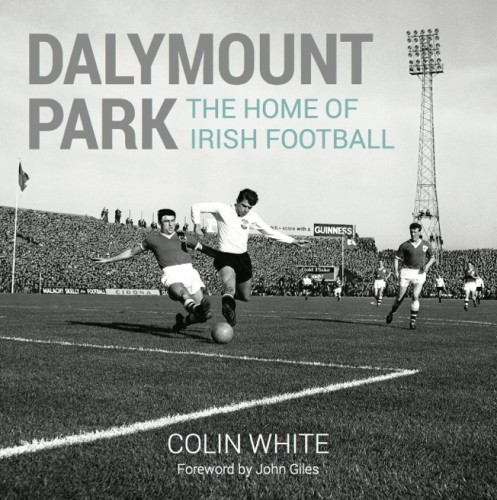DALYMOUNT PARK IS and forever will be the true historic home of Irish football. I remember as a child watching the likes of Tommy Eglington and Peter Farrell play there, and being in total awe of the place. The atmosphere at games and the tradition surrounding the stadium lured me in from a very young age.
I grew up with a keen awareness of the ground, and never missed an international match with my father – waiting for him at St Peter’s Church before we headed in as he’d always be late!
When I was younger, soccer wasn’t as widely embraced as it is today. At St Paul’s CBS, or ‘Brunner’, the level of hostility to the ‘soccer men’, or ‘corner boys’, from the authority figures at the school was astonishing. In fact, the idea of soccer as being the foreign game was drilled into us to such an extent that, for a few years after I left school, I didn’t feel Irish at all. If you were one of the corner boys going up to ‘Dalyer’ you would get a hard time in Brunner.
But it was going to take a lot more than that to stop me from playing the game I loved. And after making a handful of starts for Manchester United, my dream came true when I made my debut for Ireland in 1959 at the age of eighteen against Sweden, one of soccer’s world powers at the time.
The Dalymount roar
Upon finding out the news that I’d be starting my first game for Ireland, I felt a rush of excitement, but also a twinge of worry. I had this vision of running out at Dalymount Park, getting my first international cap, with my father up in the stand watching me, bursting with pride.
I had admired and watched from the terraces the players I was now playing alongside, like Noel Cantwell, Pat Saward and Charlie Hurley. In addition, Jackie Carey, the manager who was taking a chance on me, was an idol of mine.
We made a dreadful start to the game, as Sweden went 2-0 up early on – then came the moment that changed everything. Fifty years later it is still perfectly clear in my mind. Fionan Fagan took the ball down the right-hand side and crossed it into the box. Dermot Curtis challenged the goalkeeper, who was forced to punch the ball out. The ball came in my direction, bounced once, and I caught it on the volley from thirty yards out. I caught it in the middle of the instep, the sweet spot; a contact that felt so perfect I could hardly feel it at all. I could see the goalkeeper sprawling across his goal at the School End as the ball screamed high into the net. And even now I can hear the noise: the Dalymount roar.
That goal changed the game and Dermot Curtis scored twice more to make it a famous 3-2 win.
The School End held about 4,000 people, but I have estimated that at least 25,000 people over the years have told me that they were behind the goal on that day! My mother wasn’t there in person, but she knew I’d scored because she was listening to the match on the radio at home. And when the ball hit the net and the Dalymount roar went up, the noise travelled all the way to the Navan Road. She heard it.
My debut against Sweden remains one of the happiest days of my life. The goal I scored was not just a dream come true, it was better than any goal in any dream I had ever had – an unforgettable experience.
Brady’s debut
Another fond memory of ‘Dalyer’ is the victory over a very strong Soviet Union side in 1974. It was also significant because it marked the debut of a certain Liam Brady.
I remember the game was played on a Wednesday afternoon, and there was a real sense of optimism in the ground on the day. We played much better than anyone expected. From the first minute, the floppy-haired 18-year-old Arsenal man looked right at home in international football, causing the Soviets endless problems as Don Givens notched up a hat-trick in a momentous 3-0 win.
Magic memories
Dalymount Park holds so many fond memories for me. There was nothing quite like walking out into a packed Dalymount for an international match; the atmosphere on match days always got the adrenaline pumping. As a player waiting in the dressing room before games I can remember hearing the crowd rumbling above me in the stand, and the sound of the brass band marching as I anxiously waited to get out onto the pitch.
The fact that the future of the ground is now secured is great news. To lose Dalymount would have been very sad. As a football man, it means a lot to me, and I know it means a huge amount to Irish football fans throughout the country.
This is an extract from Dalymount Park by Colin White, published by Currach Press.


